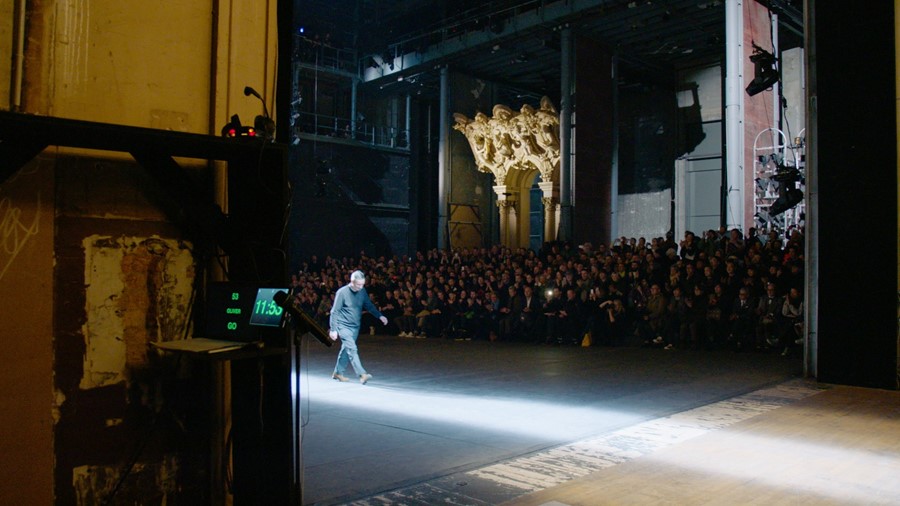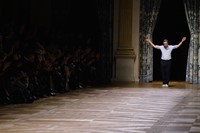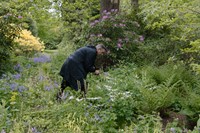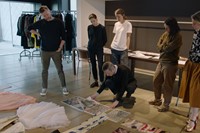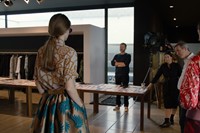As a new film about the profoundly influential Belgian designer premieres at Copenhagen International Documentary Film Festival, Carmen Gray speaks to the director who created it
“The fashion industry has been dying in its own grave, and people like Dries keep the flame alive,” says doyenne of style Iris Apfel. She’s speaking in the first documentary on Dries Van Noten and praises him as a uniquely “low-key” industry presence who always succeeds in “doing the unexpected”. German filmmaker Reiner Holzemer shot the Belgian designer over a full year as he conceptualised and brought four collections into the world. We spoke to him ahead of the world premiere of Dries this week at Copenhagen International Documentary Film Festival (CPH:DOX).
It took several years to convince Van Noten to open up his studio and home for the cameras. “He’s very private, and not a member of this so-called fashion circus,” said Holzemer, who first met him on a Vogue shoot while making a documentary about another key fashion world figure, photographer Juergen Teller. The staunchly independent designer saw that Holzemer was not interested in sensationalistic promotion either, and eventually acquiesced. “I was not looking for the drama of fashion – what goes wrong shortly before a show – which most other fashion films do,” said the director. “I wanted to make it like other artist portraits I’ve done, and give a real insight into his world and thinking.”

Van Noten spends long hours in his Antwerp studio – a former wine and spirits warehouse on the waterfront – sparingly and elegantly furnished in dark wood. Working with his creative team, he’s a master of eclectic synthesis, bringing together seemingly opposed elements with a sensibility that regards high and low culture with no hierarchy. “He’s very Flemish in his behaviour, in the sense that work is a great part of his life,” says Holzemer. “He couldn’t live in Paris because the place would distract him too much. He’s like a sponge, getting influences from everywhere, but he always makes the final decision, and can only create in harmony with everything that makes him Dries.”
Key looks are revisited, like the S/S94 silk he threw in the washing machine so that it wouldn’t be too chic for day-wear, and his A/W96 Bollywood-inspired collection that brought bright colour into the era’s prevailing minimalism. He recalls the start of the 00s as tough, but he fought to retain independence while conglomerates exerted their power around him, and the romance of catwalk shows gave way to colder distance.
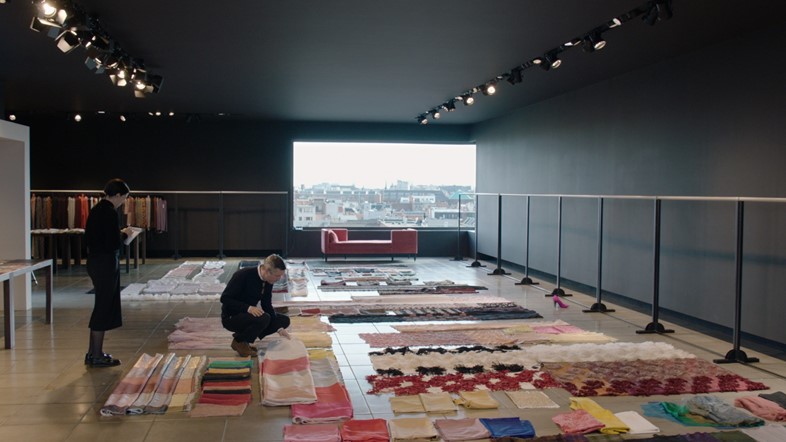
We glimpse his formative years, emerging from fashion school in Antwerp in the late 70s into an era tinged with punk and the bold aggression of designs by Claude Montana and Thierry Mugler, as ready-to-wear gained in importance. The idea that cutting-edge fashion could come from Belgium was unheard of until Van Noten and fellow graduates – soon dubbed the Antwerp Six – piled into a van and headed for 1986’s London Fashion Week with their collections. Still, the restraint of his very classic education and respect for craftsmanship (he was born into a tailoring family) are instrumental in his merging of contradictions. “When you look at Dries – how he’s dressed and behaving – he’s a very normal person in a way,” said Holzemer. “That extravagant part, as far as I know, comes from his generation. If he does something that’s too simply beautiful he adds some little detail or twist to deconstruct it.”
Dries joins the designer and his partner of almost 30 years, Patrick Vangheluwe, in their flower-filled home as they relax with glasses of wine, and prepare a gorgeously set-out dinner. Van Noten describes with warm self-effacement his perfectionist’s obsession with detail, while their pet Airedale lopes around. “He’s always creative – it doesn’t matter if he’s putting flowers in a vase, cooking or taking care of his garden,” said Holzemer. “It’s his cosmos, more or less – the house, the studio in Antwerp, his partner, his dog. Everything belongs together.”

Dries will premiere March 18, 2017, at CPH:DOX.
